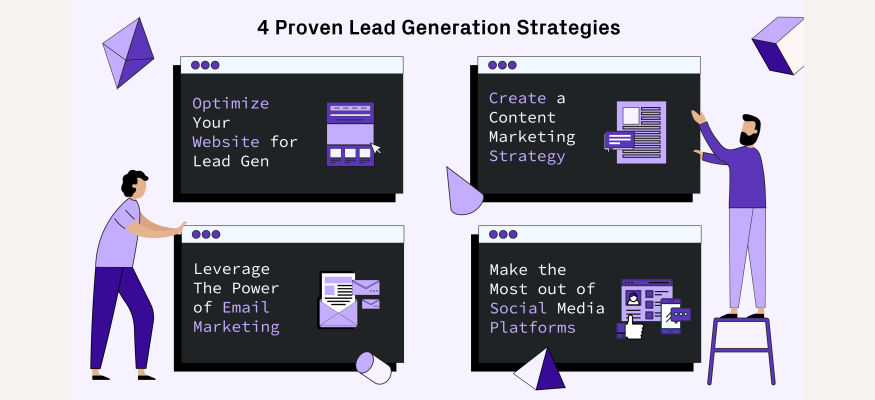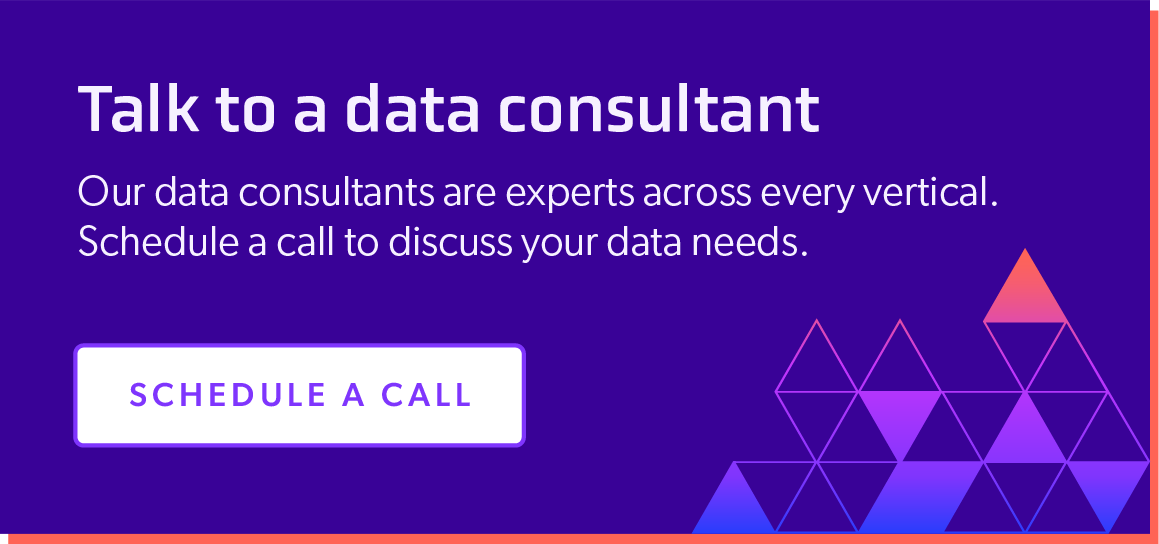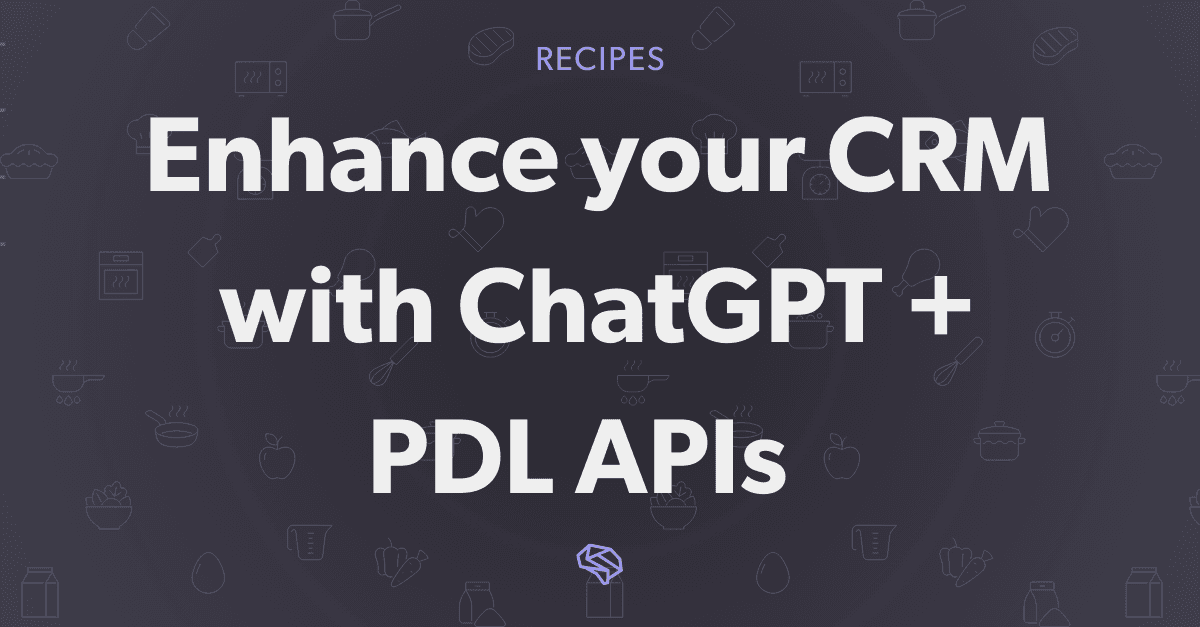
How To Qualify a Lead
March 23, 2021
Table Of Contents

Lead generation is at the core of any growth strategy. Not only does it increase sales and revenue, but it also increases brand awareness.
But, what exactly is a lead, and what strategies can you implement to consistently generate more high-quality leads?
In this article, we'll go over the definition of a lead, the different types of leads, how to generate some for your business, and how to qualify them as they move along the buyer journey.
What is a Lead?
A lead is a person or organization that has shown interest in your product or service by providing you with their personal information.
While this characterization might seem straightforward, the definition of a lead is a constant source of confusion between marketers and salespeople. This happens because a marketer's job is to generate a large volume of leads while a salesperson must convert the leads into paying customers.
Sales reps might not agree with this definition because it doesn't take lead quality into consideration, a factor that is critical to the success of their daily efforts. As we'll discuss later, leads need to be qualified as early and accurately as possible to make the sales process more efficient.
Leads vs Prospects
The terms ”lead” and “prospect” are often used interchangeably, but there are important distinctions between the two.
A lead is someone you have one-way communication with. They have expressed interest in your product or service by giving you their personal information, often in exchange for something of value, like an eBook, consultation, or access to a newsletter.
Once you have their information, you'll need a lead nurturing process set up to push them forward in the buyer's journey.
When a lead engages in sustained two-way communication with your company, either by replying to an email, answering a sales call, or taking similar actions, they become a prospect for your sales team.
With this in mind, we can say that a prospect is a qualified lead that has demonstrated interest in your offering, signaling an increased likelihood of their readiness to make a purchase.
Now that we are clear about the definition of a lead, we are going to discuss different strategies to generate and capture them.
4 Proven Lead Generation Strategies
There is no universal formula that will help every business grow, so it's important that you implement and experiment with different tactics and find what works best for your company. With that said, here are our top lead generation strategies:

1. Optimize Your Website for Lead Gen
If your website isn’t optimized to convert visitors, the rest of these strategies won't be nearly as effective. Knowing that, it is vital that your website accurately conveys who you are and what you have to offer while delivering the best user experience possible to your potential leads.
Here are some quick, easy-to-implement tactics that could potentially improve your conversion rates :
Create unique landing pages for paid advertising
Focus on creating compelling, action-oriented copy
Monitor the performance of your forms and adjust accordingly
Set upA/B tests on various website elements
2. Create a Content Marketing Strategy
Content helps you build trust with your target customer, getting them to convert from a visitor to a lead.
To maximize the return on your efforts, make sure to include opt-in forms and calls to action in all of your blog posts to help your potential customers learn more about your company and how you can solve their problems.
Additionally, you can create gated content that requires your visitors to exchange their personal information to access your premium content. This approach often works well with ebooks, webinars, white papers, templates, and anything else that your target audience may consider useful.
Once you've captured their contact data, you can continue to nurture your new leads through an email marketing strategy.
3. Leverage The Power of Email Marketing
Email marketing allows you to keep in touch with people who have opted in to your email list. Essentially, this is an effective strategy to convert your marketing leads into sales.
Create email campaigns that provide valuable information and demonstrate your expertise in your field, which will help you build trust and push your leads further down the sales funnel.
Implementing marketing automation systems allows you to reach your leads immediately once they provide you with their email address.
4. Make the Most out of Social Media Platforms
Using platforms such as Facebook and Instagram is another effective way to generate high-quality leads. To make social media work for you, create paid advertisements and leverage their powerful targeting tools to help you reach the people who are more likely to become your paying customers.
Pay special attention to LinkedIn while implementing B2B marketing strategies because it will help you connect with people who are actively looking for products or services.
Finally, you can use Twitter to share your lead generation content and engage with leads to increase brand awareness, position yourself as someone who understands your audience's problems, and establish your expertise in your industry.
Lead Qualification: How to Find Quality Leads
Qualifying a lead helps you determine whether or not a lead meets is ever going to buy your product or service. What’s more, it helps you discern from leads that are interested and ready to make a purchase from those who are not quite there yet.
When looking to qualify leads, many marketers go through a lead scoring process. This entails assigning a value to each lead that has been generated for your business. These values depend on the actions that a lead takes while interacting with your content. You can learn more about lead scoring in our in-depth "Ultimate Guide to B2B Lead Scoring".
Leveraging data from millions of people will make your lead qualifying and scoring processes more efficient and accurate.
With our Enrichment API, we seek to enable companies to build compliant data solutions. You can have more than 2.5 billion profiles at your fingertips to create custom audiences, or enrich your own data to gain a deeper understanding of your leads.
Marketing Qualified Leads vs Sales Qualified Leads
A Marketing Qualified Lead (MQL) is a lead who has shown interest in your product or service but isn't ready to talk to your sales team. MQLs engage with your content and are looking for a solution that you can provide, but they are still in the middle of the sales funnel.
On the other hand, Sales Qualified Leads (SQL) not only are interested in your product, but they have demonstrated a buying intention. These leads have previously jumped on sales calls with your sales reps or have signed up for a demo of your product. They are at the bottom of the sales funnel.
You can differentiate between the two by running them through your lead scoring system.
The Bottom Line
Understanding how leads behave as they move down the sales funnel is key for any growth strategy, ensuring that your marketing and sales teams are on the same page and working toward a common goal.
Using data to qualify leads will make your lead scoring process more efficient, increase your conversion rates, and reduce customer acquisition costs.
At People Data Labs, we have over 2.5 billion profiles that will help you understand your potential buyers better and improve your lead management system. Learn more about how we help businesses grow with data.
Like what you read? Scroll down and subscribe to our newsletter to receive monthly updates with our latest content.



